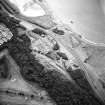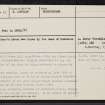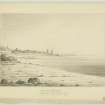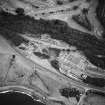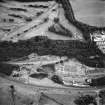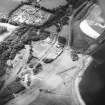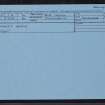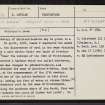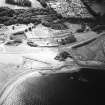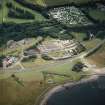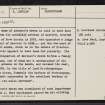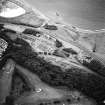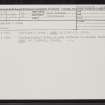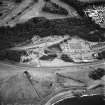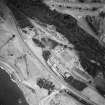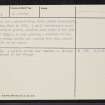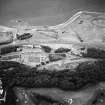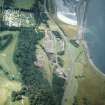Pricing Change
New pricing for orders of material from this site will come into place shortly. Charges for supply of digital images, digitisation on demand, prints and licensing will be altered.
Upcoming Maintenance
Please be advised that this website will undergo scheduled maintenance on the following dates:
Thursday, 9 January: 11:00 AM - 3:00 PM
Thursday, 23 January: 11:00 AM - 3:00 PM
Thursday, 30 January: 11:00 AM - 3:00 PM
During these times, some functionality such as image purchasing may be temporarily unavailable. We apologise for any inconvenience this may cause.
Prestongrange, Morrison's Haven
Harbour (Period Unassigned), Tide Mill (Post Medieval)
Site Name Prestongrange, Morrison's Haven
Classification Harbour (Period Unassigned), Tide Mill (Post Medieval)
Alternative Name(s) Newhaven; Morison's Haven; Acheson's Haven; Prestongrange Harbour; Prestonpans
Canmore ID 53652
Site Number NT37SE 12
NGR NT 37158 73817
Datum OSGB36 - NGR
Permalink http://canmore.org.uk/site/53652
- Council East Lothian
- Parish Prestonpans
- Former Region Lothian
- Former District East Lothian
- Former County East Lothian
NT37SE 12 37158 73817
(NT 37158 73817) Morrison's Haven (NAT)
OS 6" map (1854).
For adjacent and associated colliery and brick- and tile-works, see NT37SE 78.00 and NT37SE 79 respectively.
'The name of Acheson's Haven is said to have been derived from Sir Archibald Acheson of Gosford, created a Baronet of Nova Scotia in 1628, and appointed a Judge in the Court of Session in 1626...yet the sea-port of the ancient monks, which is on the estate of Prestongrange, never appears to have been his property. The present designation of Morison's Haven is from a family of that name, one of whom was a contemporary of Sir Archibald Acheson on the bench, and assumed his seat, also in 1626, by the title of Lord Prestongrange. Morrison's Haven, formerly the harbour of Prestonpans, is now almost superseded by the excellent harbour of Cockenzie, two miles eastward'.
Acheson's Haven was considered of such importance in the 17th C. that Parliament passed an Act allowing an annual fair in 1698 (Acts Parl Scot).
J P Lawson 1847
'The history of Morrison's-Haven may be given in a few words. In April, 1526, James V empowered the monks of Newbotle, the discoverers of coal in the same vicinity to construct a port within their own lands of Prestongrange (Parl Rec 129). Near the westend of the town of Prestonpans, the monks erected a harbour which was called New-haven, and this name was changed to Acheson's-Haven, and afterward obtained the name of Morrison's-Haven, from the proprietor, at the commencement of the 17th century. It is reckoned one of the safest harbours on this shore of the Forth, having ten feet of water at stream tides (OSA 1796). It is a customhouse port by the name of Prestonpans, extending along the southern shore of the Forth, four and twenty miles between the ports of Dunbar and Leith'. So erected in 1710 (MS Customhouse report).
G Chalmers 1888
Morrison's Haven was known by the name of Newhaven in 1655.
P Humebrown 1891
Morison's Haven fell into disuse after the first World War, land reclamation has largely swallowed it up, and what remains of its pier is being battered to pieces by the sea.
Of these remains, there is evidence of late 18th c. masonry, although much of it is of fairly recent construction. Portions of the pier proper could contain evidence of work done by William Morison about 1700.
A village evidently existed at Morison's Haven, though the date of its origin is unknown. It is marked on Adair's Map of 1682, and a glass-factory which proved unsuccessful, was operating there in 1698. A small two-storeyed house with crow-stepped gables, standing just south of the fort site (NT37SE 23), is most probably a survivor of this village. A weekly market and a yearly fair were authorised in 1701 at the haven.
[Undated] A Graham MS notes.
(Location cited as NT 372 738). Morison's Haven, East Lothian. In 1526, Newbattle Abbey [NT36NW 14] was authorised to build a harbour on the lands of Prestongrange, its stated purpose being to provide shelter for fishing-boats as fishermen were suffering casualties and loss 'defectu boni portus', but construction may not have begun before 1541, when one Alexander Atkinson (Acheson) received the place in feu-ferme in order to build a harbour, with tide-mills, and to repair boats. By 1553 Acheson had expended a large sum on building and fortifying the harbour, and his son John was offering to complete the work on certain conditions. The existence of the tide-mills seems to be confirmed by the use of the name 'Port an Moulin' in correspondence which passed at this time. Adair's record (1703), presumably based on observations made some time earlier, describes the harbour as 'a small Creek, with a Rocky and narrow Entry', but considerable improvements, if not wholesale reconstruction, seem to be implied by the request for an imposition, made by William Morison of Prestongrange in 1700 'for building an harbour at Morison's Haven'. Further improvements were made in the 18th and 19th centuries, and in 1796 the harbour was held to be one of the safest in the Firth; it served the seaborne trade of Prestonpans, and also the local industries and coal-field, but fell into disuse after the First World War.
The harbour in its final phase is illustrated by the 25-inch OS map revised in 1913-14. This shows it as being about 720ft [219.5m] long on an E-W axis, with an inner and an outer basin, each some 160ft [48.8m] wide, connected by a short, narrow neck. Its total area was just under 2 acres [0.8ha]. The N side was formed by a breakwater pier about 550ft [167.7m] long, at the head of which there was an entrance some 70ft [21.3m] wide. S of the entrance, a slightly curving pier about 110ft [33.5m] long covered the W end of the outer basin; at its head there was a roundel carrying a light. S of the outer basin there was a large pond, supplied with water from a nearby colliery and probably intended to wash silt out of the harbour. Between this pond and the inner basin is marked the site of a 'fort' [NT37SE 23], the remains of which were still visible in 1853; this was presumably the work built by the Achesons in the middle of the 16th century.
Of the foregoing structures, very little now survives, as the remains are gradually being buried through the reclamation of the foreshore, but the record made in 1961 helps to fill in the picture. Some stretches of the breakwater pier still emerge through the encroaching shingle, the work being faced with large dry-stone blocks and slabs, well-dressed and set some vertically and some on bed. Many show holes for a lewis, and at least one fragment of the core, which is largely of boulders, has been drilled and split by blasting. The part of the top that has survived contains both boulders and large blocks, the latter roughly shaped but not regularly shaped. The work is thus not homogenous, no doubt as a result of frequent repairs, but some of it may go back to the reconstruction of the early 18th century; the top, in particular, resembles that of the Old Harbour at Donibristle [NT18SE 16], for which a similar date was suggested. The pier-head is probably later, as many of its slabs show stugging, but it too has been patched considerably and rebuilt. The short pier S of the entrance is now covered up with debris, but in 1861 it was found to be neatly built of well-dressed dry-stone blocks, some of them droved, and it may well have dated, in its final form, from the early 19th century. The roundel at its head was of concrete and evidently a late addition.
[Sources and authorities cited].
A Graham 1971.
NT 3710 7385. A portion of the pier remains, c.3m high. No trace remains of the village.
Visited by OS (SFS) 26 August 1975.
The site of Morrisons Haven now lies almost wholly under reclaimed land. Two sections of the harbour wall are however still visible. One section lies within a hollow in the reclaimed land and consists of a 30m section of walling running approximately NW-SE. The pier has dressed facing stones with pale grey mortar. The visible section stands 0.70m high and is 2.20m wide. Both ends and the northern side are obscured by earth banks. A second section is visible on the shore and consists of rounded boulders standing approximately 1m high and 2m wide and 15m long. There is extensive damage by the sea and the north end of the pier is little more than a line of tumbled boulders. These remains appear to be the west breakwater of Morrisons Haven as they correspond to the location on the 1853 Ordnance Survey Map.
Site recorded by GUARD during the Coastal Assessment Survey for Historic Scotland, 'The Firth of Forth from Dunbar to the Coast of Fife' 22nd February 1996.
See Prestongrange Community Archaeology Project Report (Year 1) - MS 2444 for details of the history of this site, and place name changes, disuse of the site and the impact of erosion to the seaward end of the pier.
M Cressey, R Oram, 2005


























